If you have an orchid with wilting leaves, don’t despair! There are a few things you can do to revive your plant. First, check the roots to see if they’re healthy and moist. If they’re not, gently water them and let the excess water drain away. Next, check the potting mix to see if it’s too dry. If it is, water it and let the excess water drain away. Finally, give your plant some light. Orchids need bright, indirect light to thrive. If your orchid is in a dark spot, move it to a brighter location. With a little TLC, your orchid will be back to its beautiful self in no time!
Why Do Orchid Leaves Wilt And What Can I Do?
Orchid leaves wilt for a variety of reasons, including too much or too little water, too much or too little light, and temperature stress. If you notice your orchid’s leaves wilting, take a closer look at the plant to determine the cause. Once you’ve identified the problem, you can take steps to fix it.
If you’re watering too often, allow the potting mix to dry out slightly between waterings. If you’re not watering often enough, water your orchid more frequently. If your orchid is getting too much or too little water, the first step is to adjust your watering schedule.
If too much or too little light is the problem, move your orchid to a spot that gets more or less light, depending on what it needs. If temperature stress is the issue, make sure your orchid is in a spot that stays between 65 and 80 degrees Fahrenheit.
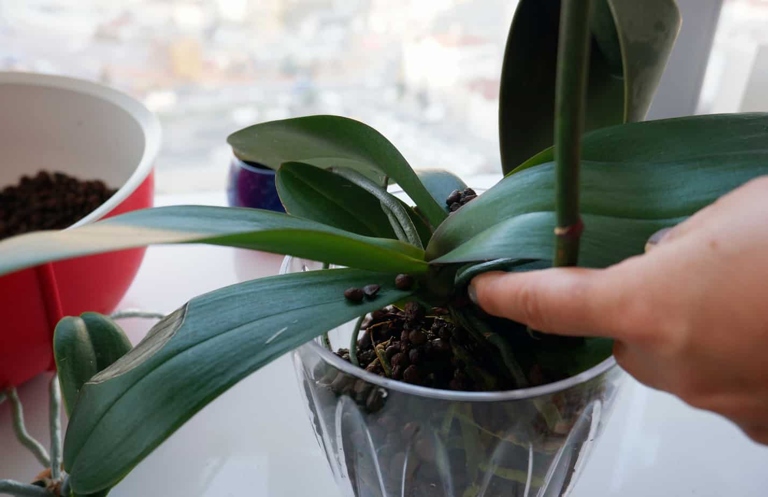
With a little troubleshooting, you can get your orchid’s leaves to stop wilting and help the plant thrive.
Incorrect Temperature
If this happens, raise the temperature immediately and make sure to keep the plant warm. If your orchid leaves are wilting, it’s likely because the temperature is incorrect. Orchids thrive in warm weather, so if the temperature drops too low, the leaves will start to wilt.
The Presence of Pests or Diseases
Here are a few things to look for: If your orchid leaves are wilting, it could be due to pests or disease.
Pests:
If you see small, crawling insects on your orchid leaves, they are probably aphids. These pests suck the sap from the leaves, causing them to wilt. To get rid of aphids, you can spray them with water or an insecticide.
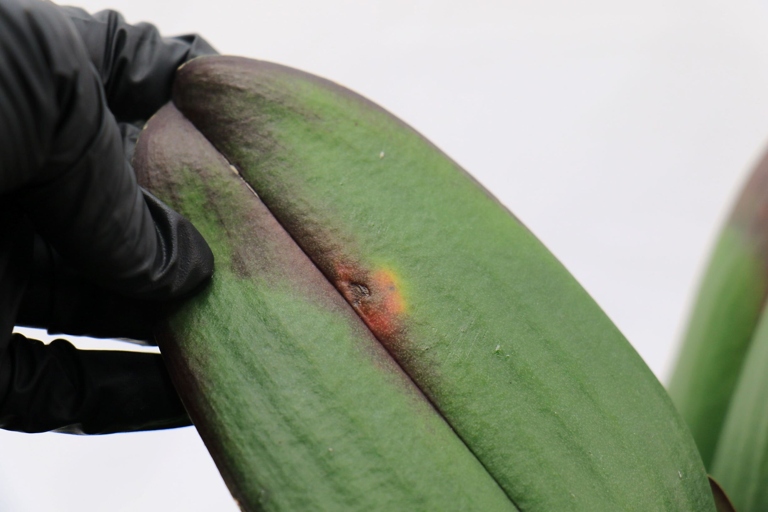
If your orchid leaves have brown or black spots, they may be infested with mealybugs. To get rid of mealybugs, you can spray them with water or an insecticide. Mealybugs are small, white insects that feed on plant sap.
Diseases:
If your orchid already has the disease, you can treat it with an antibiotic. If your orchid leaves are wilting and turning yellow, it could be a sign of a disease called bacterial leaf spot. To prevent bacterial leaf spot, water your orchids from the bottom and avoid getting water on the leaves. This disease is caused by bacteria that infect the leaves, causing them to wilt and turn yellow.
To prevent fungal leaf spot, water your orchids from the bottom and avoid getting water on the leaves. If your orchid already has the disease, you can treat it with a fungicide. This disease is caused by fungi that infect the leaves, causing them to wilt and turn brown. If your orchid leaves are wilting and turning brown, it could be a sign of a disease called fungal leaf spot.
Root System Diseases
The most common root system diseases include root rot, root mealybugs, and root aphids. Orchids are susceptible to a variety of root system diseases, which can cause the leaves to wilt.
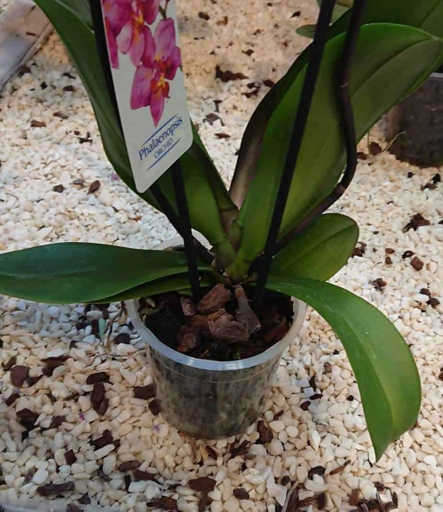
If root rot is suspected, the plant should be removed from the pot and the roots should be inspected. If the roots are black or mushy, they should be removed and the plant should be replanted in fresh potting mix. Root rot can be prevented by ensuring that the potting mix is well-drained, and by not overwatering the plant. Root rot is caused by a variety of fungi, and is the most common root system disease.
Root mealybugs can be controlled with regular applications of insecticidal soap. Root mealybugs are small, white insects that feed on the roots of plants.
Root aphids are small, green insects that feed on the roots of plants. Root aphids can be controlled with regular applications of insecticidal soap.
Too Small Container
If you notice your orchid leaves wilting, it could be a sign that the pot is too small. The roots of the plant need room to grow, so a pot that’s too small can stunt the plant’s growth. If you’re not sure whether the pot is too small, try gently tugging on the plant. If it feels snug in the pot, it’s probably time to repot.
Cold Draft
Orchids are tropical plants, and they prefer warm, humid conditions. You can also try misting the leaves with warm water to raise the humidity around the plant. A cold draft can cause the leaves to wilt and the flowers to drop. If you notice your orchid leaves wilting, it could be due to a cold draft. If you think your orchid is getting too cold, move it to a warmer location.
Getting Used to The New Condition
If you’ve recently acquired an orchid, you may be wondering why its leaves are wilting. Your orchid is simply adjusting to its new environment and will likely bounce back within a few days. Don’t worry, this is perfectly normal!
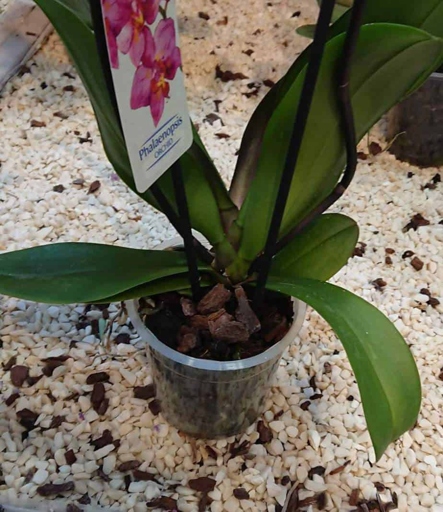
Orchids need bright, indirect sunlight to thrive, so if your plant is in a shady spot, consider moving it to a brighter location. In the meantime, there are a few things you can do to help your orchid acclimate to its new home. First, make sure it’s getting enough light.
Orchids prefer warm, humid environments, so if the room is too cold or too dry, your plant may suffer. Second, check the temperature of the room where your orchid is located. Consider investing in a humidifier to raise the humidity level around your orchid.
Over-watering can be just as harmful to an orchid as under-watering, so it’s important to strike a balance. Finally, don’t forget to water your orchid regularly. Watering once a week should suffice, but be sure to check the soil before watering to make sure it’s dry.
With a little care and patience, your orchid will soon be thriving in its new home!
Orchid Leaves Wilting After Transplant
If you’ve recently transplanted your orchid, you may have noticed that its leaves are wilting. This is perfectly normal and nothing to worry about! The leaves are simply adjusting to their new environment and will return to their normal state within a few days.
There are a few things you can do to help your orchid through this transition period:
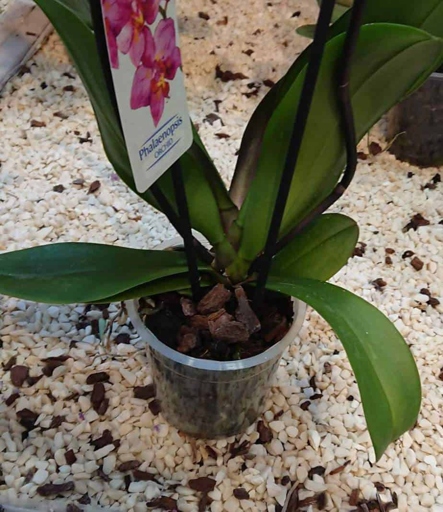
Orchids need bright, indirect light to thrive. -Make sure it’s getting enough light. If your orchid is in a spot that’s too shady, its leaves will start to turn yellow or brown.
Orchids like to be kept moist, but not soggy. -Water it regularly. Water your orchid about once a week, or when the top inch of soil feels dry.
Orchids need a balanced fertilizer to help them grow. -Fertilize it monthly. Look for a fertilizer that’s specifically formulated for orchids, and follow the directions on the package.
When to Repot Your Orchid?
Here are a few things to keep in mind when deciding whether or not to repot your orchid: If your orchid leaves are wilting, it might be time to repot your plant.
-The size of your plant: If your orchid is growing too large for its pot, it will need to be repotted in a larger container.
-The health of your plant: If your orchid is unhealthy or its roots are overcrowded, repotting can help it to recover.
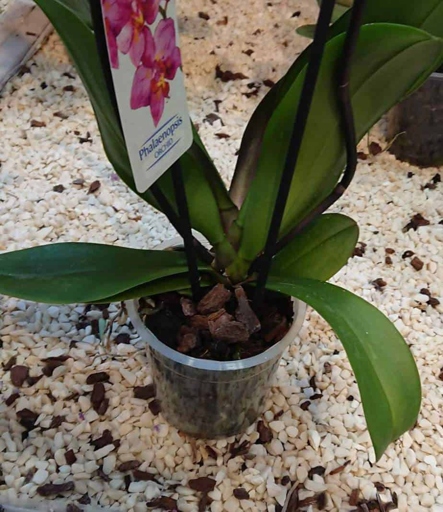
-The time of year: The best time to repot an orchid is in the spring, before new growth begins.
If you think your orchid might need to be repotted, be sure to use a pot that is only slightly larger than the current one. This will help to prevent root damage. And be sure to use a well-draining potting mix that contains bark, perlite, and charcoal.
Should I Repot My Orchid After Purchasing It?
The answer is, it depends. If the orchid is in a pot that is too small, or if the roots are crowded, then you will need to repot it. If you’ve just purchased an orchid, you may be wondering if you need to repot it. If the pot is the correct size and the roots are not crowded, then you can leave it as is.
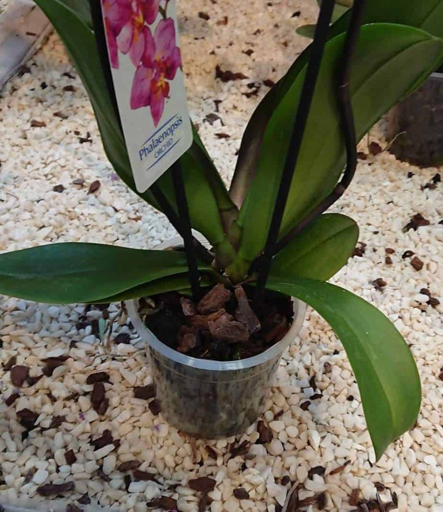
Orchids do not like their roots to be disturbed, so be careful not to damage them when you’re repotting. If you do need to repot your orchid, be sure to use a pot that is only slightly larger than the current one.
It’s a good idea to repot your orchid every year or two, just to make sure it stays healthy and happy.
The Impact Of Excessive Flowering on Orchid’s Turgor
The flowers require a lot of energy and resources to produce, which can deplete the plant’s reserves. This can lead to the leaves wilting and the plant’s overall health declining. When orchids are in bloom, they produce an abundance of flowers. While this may be aesthetically pleasing, it can put a lot of stress on the plant.
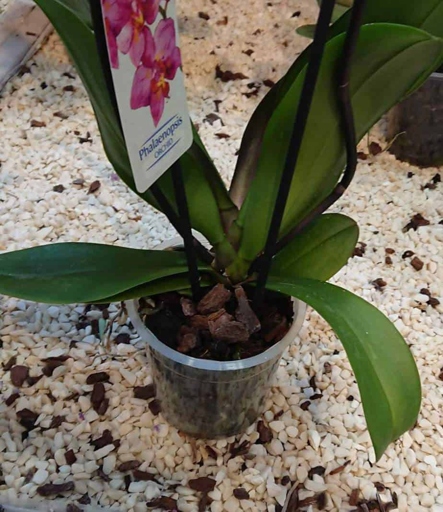
If you notice your orchid’s leaves wilting, it’s important to take action immediately. Remove any spent flowers and cut back on watering. With proper care, your orchid should be able to bounce back from excessive flowering and continue to thrive. Allow the plant to rest and recover, and it should soon return to normal.
What Nutrient Deficiencies Cause Wilting?
Without sufficient levels of these nutrients, plants will wilt and eventually die. The most common nutrient deficiencies that cause wilting are nitrogen, phosphorus, and potassium. These nutrients are essential for plant growth and must be replenished regularly. When orchid leaves wilt, it’s often a sign of nutrient deficiencies.

If you suspect that your orchid’s leaves are wilting due to nutrient deficiencies, the best course of action is to take a sample of the leaves to a local nursery or gardening center for testing. This will help you determine which nutrients are lacking and how best to replenish them.
Orchid Flowering Consumes A Lot Of Energy And Results In Wilting
Orchid leaves wilting is a common problem that can be caused by several different things. This can be caused by too little water being given to the plant, or by the plant not being able to absorb water properly. Another common cause of orchid leaves wilting is that the plant is not getting enough light. This can be caused by the plant being in too much shade, or by the plant not getting enough direct sunlight. One of the most common causes is that the plant is not getting enough water.
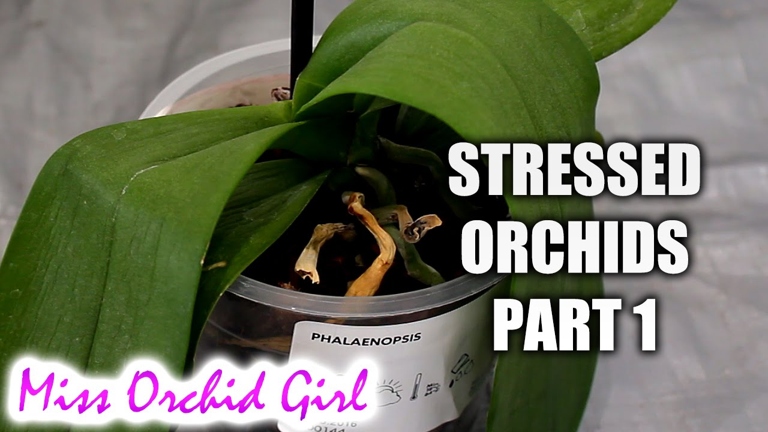
If you are not sure what is causing the problem, you can try giving the plant a little more water and a little more light and see if that helps. If you think that your orchid leaves are wilting because of a lack of water, the first thing you should do is increase the amount of water you are giving the plant. If you think that the plant is not getting enough light, you should try moving it to a location where it will get more light.
Fertilizing When Buds Are Forming
There are a few things to keep in mind when fertilizing during this time. First, be sure to use a fertilizer that is high in phosphorus. If you notice that your orchid leaves are wilting, it may be time to fertilize. Finally, be sure to fertilize regularly so that the plant has a constant supply of nutrients. This nutrient is essential for bud development. When buds are forming, it’s important to fertilize so that the plant has the nutrients it needs to produce healthy flowers. Second, use a diluted fertilizer solution so that you don’t damage the delicate buds.
Fungal Infections Are to Blame
Fungal infections are to blame for the wilting of orchid leaves. Fungal infections can be treated with a number of fungicides, but it is important to correctly identify the type of fungus before treating. These infections can be caused by a number of factors, including overwatering, poor drainage, and exposure to too much humidity.
Wilting Orchid Leaves Is An Early Warning Sign Of Disease
If you notice your orchid’s leaves wilting, it’s an early warning sign of disease. There are a few things you can do to save your plant.
First, check the roots. But if they’re firm and white, you can try to save the plant. If they’re mushy or black, it’s too late.
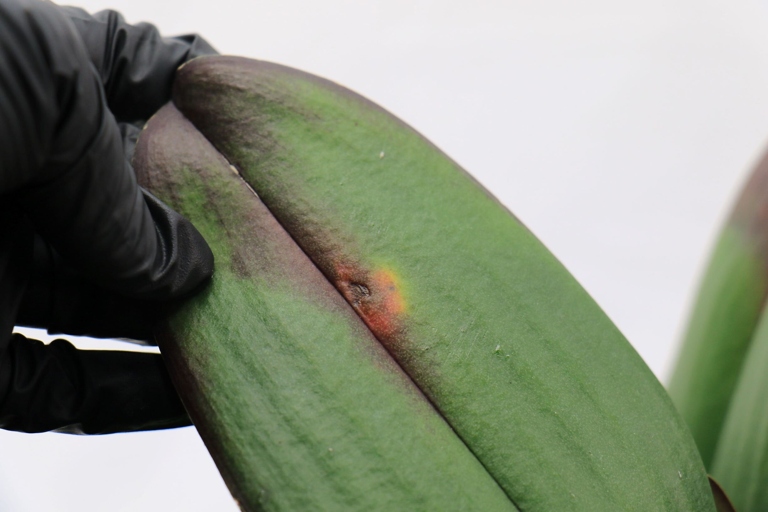
Make sure the pot has drainage holes so the water can’t sit at the bottom and rot the roots. Next, water the plant.
Orchids need bright, indirect light to thrive. If your plant is in a dark spot, move it to a brighter location. Finally, give the plant some light.
But if the leaves continue to wilt, it’s a sign that the plant is beyond help and you’ll need to get a new one. If you take these steps, you may be able to save your wilting orchid.
The Leaves Have Wilted And The Growing Point Has Turned Black
If your orchid leaves have wilted and the growing point has turned black, it’s important to act fast. Here’s what to do:
Remove the affected leaves and growing point. 1.
Place the plant in a bright, airy spot. 2.
Water the plant regularly, making sure the potting mix is always moist but not soggy. 3.
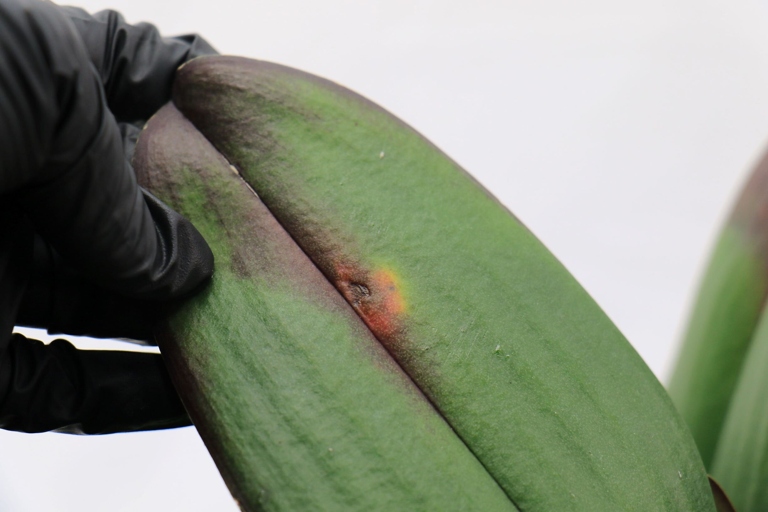
4. Apply a high-quality orchid fertilizer once a month.
With proper care, your orchid should soon recover from this setback and resume healthy growth.
Final Words
If the leaves are wilting and the plant is not getting enough light, move the plant to a brighter location. Be sure to allow the potting mix to drain before watering again. If the leaves are wilting and the potting mix is moist, the plant may be getting too much water. Allow the potting mix to dry out before watering again. When orchid leaves begin to wilt, it can be a sign that the plant is not getting enough water. If the leaves are wilting and the potting mix is dry, water the plant thoroughly.
Frequently Asked Questions
1. Why are my orchid leaves wilting?
There are several reasons why orchid leaves may wilt. The most common reason is that the plant is not getting enough water. Orchids need to be watered about once a week, and they prefer water that is room temperature. If the leaves are wilting and the soil is dry, water your orchid immediately.
2. I water my orchid regularly, but the leaves are still wilting. What could be the problem?
If you are watering your orchid regularly and the leaves are still wilting, the plant may be getting too much sun. Orchids prefer indirect sunlight, so if the plant is in a sunny spot, try moving it to a shadier location.
3. The leaves on my orchid are wilting and turning yellow. Is this a problem?
Yellowing leaves can be a sign of a nutrient deficiency. If the leaves are wilting and turning yellow, check the soil to see if it needs to be fertilized.
4. I think my orchid has a pest problem. How can I tell?
If you think your orchid has a pest problem, check the leaves for signs of pests or damage. Common pests include aphids, mealybugs, and scale. If you see any pests, remove them from the plant and treat the plant with an insecticide.
5. What are some other common problems that can cause orchid leaves to wilt?
Other common problems that can cause orchid leaves to wilt include root rot, fungal diseases, and temperature stress. If you suspect any of these problems, contact a professional for help.
Final thoughts
If your orchid leaves are wilting, it’s important to take action immediately. The first step is to check the roots. If they’re mushy or black, it’s a sign of root rot. Cut away the affected roots and repot the plant in fresh, sterile potting mix. If the roots look healthy, the problem is probably lack of water. Water your plant thoroughly, making sure the pot drains well. If the leaves are still wilting, try moving it to a spot with more humidity.
